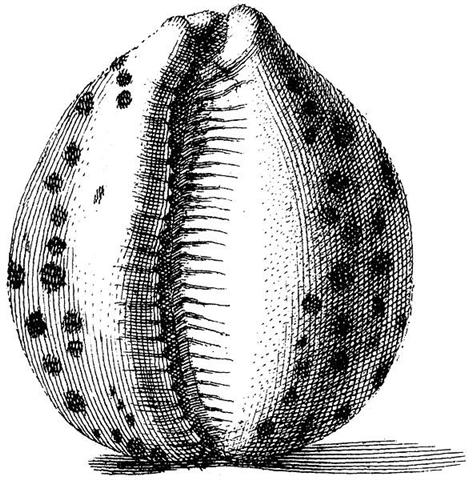|
This is character GD25 where Metoro usually said hare pure (= 'prayer house'), e.g. at Eb1-34. House is hare and prayer is pure. In the beginning I thought this was a loan word from the English language ('pray' → pure). But I was probably wrong I later understood. Moreover, in the list of words at http://www.rongorongo.org/vanaga there is no mention of prayers: pure = cowrie (Cypraea caput draconis); pure vaka, another type of cowrie, which can float on the sea like a diminutive boat (vaka). ... This male and chiefly water (semen) in the womb of a kava bowl whose feet are called 'breasts' (sucu), and from the front of which, tied to the upper part of an inverted triangle, a sacred cord stretches out toward the chief... The cord is decorated with small white cowries, not only a sign of chieftainship but by name, buli leka, a continuation of the metaphor of birth - buli, 'to form', refers in Fijian procreation theory to the conceptual acception of the male in the body of the woman. The sacrificed child of the people will thus give birth to the chief ... But on Tahiti pure = 'prayer', 'rite' and Metoro may have used the word in this meaning. Although Jaussen (according to Barthel) understood pure as 'porcelaine'.
Anyhow, I can see a statistical correlation between 'the Sun' (GD12) and 'hare' (GD25). Which makes me think about the myth about the clam: The glyph is showing two bent henua (GD37), two periods of time / space (or rulers of events) with gaps in between (where prayers could be needed). And then there is kau-penga, the divisions of the year according to a Maori scholar: "Our old men said that the stars were the cause of good or bad seasons which are influenced by the mana of their rays. Thus the divisions of they year, kau-penga, were named after certain stars." (Makemson) I imagine kau-penga was not far from tau paenga, the foundation stones of a hare paenga:
|

